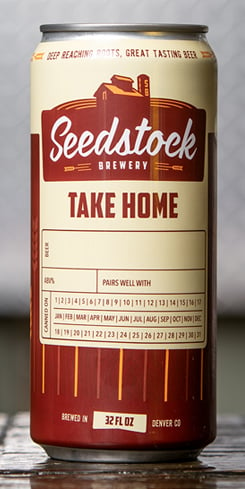Start 14-Day Trial Subscription
*No credit card required

Top 100 Beers of 2018
#3

97
by Michael Bury
Dusseldorf Alt
Seedstock Brewing Co.

Owner Jason Abbott Talks Dusseldorf Alt
Who was responsible for this beer’s recipe?
Our roots are in embedded in our old-world, family recipes, and the new recipes are still the result of family collaboration. This recipe was the brain-child of the three Seedstock partners: head brewer and co-owner Jason Abbott, co-owner Ron Abbott and co-owner Frank Thomas.
What sets this beer apart from other examples within the style?
Altbiers have a growing cult following in the U.S., mostly led by German-style breweries. However, many of these are brewed as a Northern German style alt, which are sweeter and lighter in terms of taste and color compared to the “Dusseldorf” style. We brew our Altbier in the Dusseldorf style, meaning it’s much more bitter and darker than the North German style, while still maintaining the quintessential altbier malty flavor.
What makes this beer truly world class?
In recent years, here in the U.S., altbiers – alt meaning old – are old-world beers that have taken on new life in America. With our Altbier, we’re paying homage to our Eastern European family roots while giving our customers something they rarely see – a beer that is truly malty and bitter at the same time. These flavors are rarely experienced together in a balanced manner, but the altbier makes it possible.
What is your favorite aspect of this beer (flavor, aroma, mouthfeel, etc.)?
From a taste standpoint, we love how the malty mouthfeel is balanced with the bitterness. Ron’s favorite thing about this beer is that it reminds him of a trip he took to Germany several years ago where he first tried a Dusseldorf- style Alt. We ‘tip our cap’ to those great beers in Dusseldorf and hope that we show them respect by crafting a good altbier as well.
How popular is this beer among your faithful fans?
Among our most faithful customers, it is very popular. Many people who are familiar with the style say that our Altbier is their favorite on the market, and that it reminds them of altbiers they had in Germany – and we are very humbled by those compliments.
Is this your “desert island beer?”
We could drink any beer on a desert island!
Can you describe this beer in 10 words or less?
Malty with a slightly fruity aroma, clean and assertive hop bitterness.
What’s a good food pairing for this beer?
Anything with gravy!
Judge’s Second Opinion
Asking your server at your local watering hole if they have any Altbiers available for consumption should result in an eyebrow-raised, confused look. But they’re a class of hybrid beers (ales fermented cooler than normal or lagers fermented warmer) that are nothing more than bitter brown beers. American Browns come close to the style, but the type and amount of late hopping really sets these two styles apart from one another.
Thankfully, I was introduced to the style by a friend of mine who just so happens to be of German descent. And has been to Germany. And has won multiple Gold medals in the category at several homebrew competitions. I can’t thank him enough for breaking that barrier for me and exposing me to this approachable beer style.
Seedstock’s Dusseldorf Alt should appeal to a wide range of individuals. Like malt? No problem. The biscuit, bready, brown bread crust and light caramel malt will appeal to malt heads. How about hops? The moderate hop bitterness, clean, crisp finish and lightly spicy hop profile should appeal to hop lovers.
What’s great about the style, and especially Seedstock’s version, is its drinkability. There’s an abundance of character from both the malt and hops to provide plenty of intrigue to the drinker, but because of its clean, dry finish, the drinker can easily go back for another sip time and time again. One aspect of the beer that really rounds out the flavor is the presence of Maillard products, which includes melanoidins. These bread crust-like flavors help to round out the sweeter aspects of the beer and provide a bridge to the hop bitterness.
Finally, I was quite impressed, after I judged the beer, when I found out that it traveled in a crowler from Colorado to Pennsylvania without any degradation. It’s a shame that currently you can only get the beer in the immediate Colorado area. However, this supports the notion of patronizing your local brewery, and anyone in the Denver area would be more than satisfied by a visit.– Michael Bury



